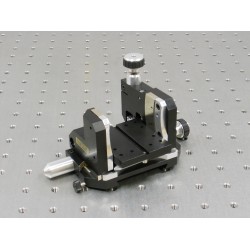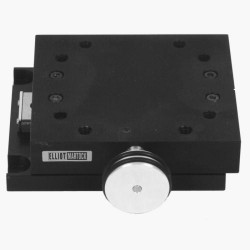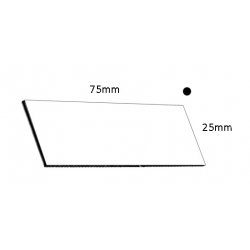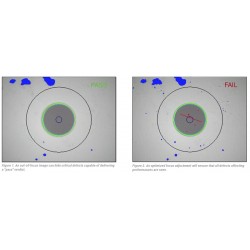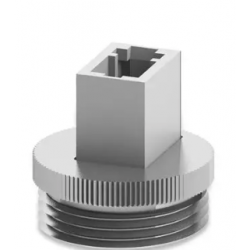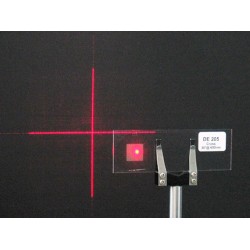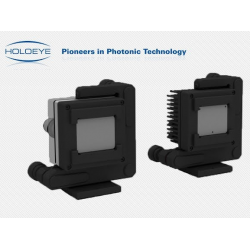OptiXplorer - OptiXplorer Education Kit
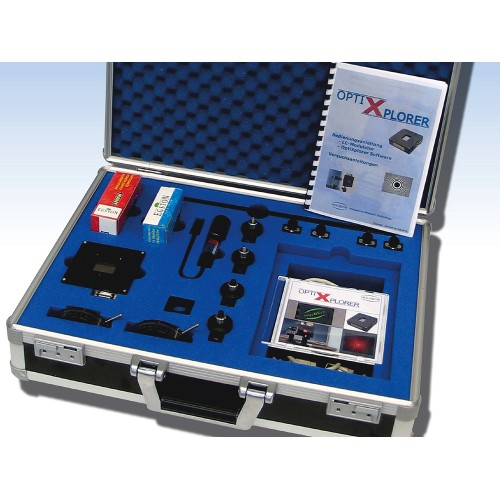
- Stock: Contact us for details
- Click here to: Contact us
- Model: HOLOEYE OptiXplorer
Premium Education Kit
OptiXplorer
The OptiXplorer is a kit for educational purposes, which provides a variety of experiments for introductory and advanced laboratory classes in physics and engineering study courses.
The main component of the OptiXplorer is a HOLOEYE spatial light modulator (SLM) with XGA-resolution of 1024 x 768 pixels. It is used in various applications such as image projection, adaptive optics, optical metrology and diffractive optics.
The kit also contains a detailed tutorial, application software, a laser module with beam expander and focus adjustment, SLM mounting ring, laser mount and cable set.
It is a powerful product that allows the demonstration and active exploration of a wide range of optical phenomena for students at universities and university-level institutions.
Kit contents
 XGA SLM
XGA SLM
Laser module
Rotary polarisers x 2
Posts x 4
Post holders x 4
Rail carriers x 4
30 cm Optical rail x 1
OptiXplorer - Experiment Modules
In the AMP module, the SLM is used as dynamic image generator. First the polarisation characteristics of the light source and its change by transmission through the SLM are investigated. Then the basic laws of imaging and separation of illumination and imaging are reviewed in order to build a simple projector so that image magnification and contrast can be determined.
In the JON module, the components of the SLM´s Jones matrix is determined from transmission measurements using the rotatable polarisers. The LC cell´s birefringence, director orientation and twist can be derived from a well explained numerical calculation. As multiple solutions are obtained, additional measurements with other wavelengths or with addressed grey levels are used to remove the ambiguities.
In the LIN module, the SLM is first investigated as a static diffraction grating and some of its geometrical parameters can be derived. Using lenses, the far-field diffraction pattern can be observed even with a magnified diffraction angle. Binary linear gratings and 2D-separable gratings which can be used as beam-splitters and array generators are displayed on the SLM and the measured diffraction efficiencies are compared with the theoretical predictions.
In the RON module, Ronchi gratings of variable grey level contrast will be addressed and from the measured diffraction efficiencies the phase modulation can be derived. This measurement is first performed for a few gratings using the "OptiXplorer" software to understand the principle of measurement. With a LabVIEW™ software program, this measurement can be repeated in an automated way. Thus, the best choice of orientation of the rotatable polarisers for obtaining high phase modulation can be determined.
In the CGH module, the "OptiXplorer" software is used to generate dynamic lenses and prisms as well as dynamic CGHs (or DOEs) for user-specified signals using the IFTA algorithm. Using ABCD matrices, the measurement of positions of optical elements and distances to the plane of Fraunhofer diffraction can be compared with theoretical predictions. Superimposed lens and prism functions are used to move the far-field pattern in space and to spatially separate it from the undiffracted light, thereby delivering a lively introduction to the principles of Fourier optics.
In the INT module, a simple two-beam interferometer is used to create interference fringes which are recorded on a CCD camera. The two beams are mutually phase-shifted by the SLM, which is used to display half-screen images. The spatial fringe-shift can be used to derive the phase modulation. The measurement is first performed with the "OptiXplorer" software in order to understand the principle of measurement. The measurement can be repeated with the provided "PhaseCam" software in an automated fashion yielding more accurate results.
The collection of experiments was developed in co-operation with the Institute of Solid State Physics at the University of Bremen, and the Laboratory for Coherence Optics at the Institute of Physics at Humboldt University Berlin. The tutorial covers a wide range of experiments, e.g. amplitude modulation in projection set-ups, polarisation properties, LCD characterisation, diffractive optics elements, dynamic diffraction, spatial filtering and phase modulation in a Mach-Zehnder interferometer.
|
HOLOEYE Photonics AG is a provider of products and services based on micro-structured optical components and computer-controlled optical wave manipulation. The company's main focus is on the development of adaptive micro-optics and diffractive components for scientific and industrial applications. Products include spatial light modulators and diffractive optical elements. HOLOEYE's spatial light modulator (SLM) systems are based on liquid crystal micro-displays. These devices can modulate light spatially in amplitude and phase, so they act as a dynamic optical element. The optical function or information to be displayed can be taken from the optic design directly and can be transferred by a computer interface. Implementation is straightforward due to the smart system architecture and by easy addressing using VGA or DVI signals directly from a computer graphics card. In many cases there are no additional optical devices necessary or the SLM can be incorporated in existing optical setups and devices. |
Applications
|
|
HOLOEYE also manufactures diffractive optic elements. Diffractive optics have unique properties that enable them to realise optical functions that are otherwise difficult or impossible with conventional optics, and can even perform the conventional optical functions of lenses, prisms or aspheres. Their advantages include reduced weight and size, but the main feature of diffractive optics is that they can act like optical wavefront processors. |
|
Please contact us for the latest price.
A number of papers have been published by scientists around the globe who have used a HOLOEYE OptiXplorer kit in their research. Here is an example:
A database of published papers, searchable by device or application, can be also found on the HOLOEYE website here.
Topics & Experiments
- AMP – Using an SLM as amplitude modulator for image projection experiments
- JON – Measurement of the Jones matrix components of the TN-LC cells of the SLM and derivation of the cell parameters
- LIN – Using an SLM to create binary linear and 2D-separable beam-splitter gratings
- RON – Measurement of the phase modulation of the SLM using dynamically addressed Ronchi gratings
- CGH – Computer generated holograms with included lens and prism phase functions
- INT – Interferometric fringe-shift measurement of the phase modulation of the SLM
Together with a theoretical introduction in the handbook and the provided references to additional literature, the six experimental modules make the Optixplorer a powerful and low-cost educational tool that enables the demonstration and active exploration of a wide range of optical phenomena.
|
Hardware: |
Software: |
|
|






